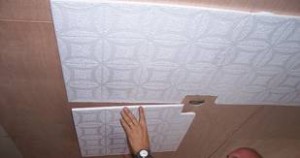 Ceiling tiles - a finishing coating that has long and firmly occupied its niche in the building materials market. Elegant stretch ceilings and multi-level ceilings made of drywall today, naturally, plugged the tile on the rear row, but, nevertheless, they did not draw out completely from discharge of finishing materials.
Ceiling tiles - a finishing coating that has long and firmly occupied its niche in the building materials market. Elegant stretch ceilings and multi-level ceilings made of drywall today, naturally, plugged the tile on the rear row, but, nevertheless, they did not draw out completely from discharge of finishing materials.
At one time, the ceilings made from the tile were considered a symbol of wealth and an indicator of good repair. At the moment, the ceiling tile is no longer heard as an elegant coating, which, however, does not prevent it from being able to use consumer demand. By virtue of its low cost and ease of execution of finishing works, as well as remarkable performance and beautiful appearance, the tile allows you to carry out budget repairs and significantly improve the ceiling surface. Therefore, the question of how to glue the tile on the ceiling, today is very relevant for any home master.
The range of ceiling tiles is quite wide and diverse, so no difficulty when choosing a coating does not occur. Ceiling tiles differ in color, drawing and texture. As for the color shades, their great set: ranging from the classic white and ending with the color imitating a wooden surface. The drawing is also very easy to pick up according to your taste, and the selection of the invoice is completely dependent on the purpose of the room in which the tile is glued. So, for example, glossy tile is better glued in the kitchens, in bathrooms and toilets, as it is better clean, and the matte tile will decorate the living rooms.
Before glue tiles, it is necessary to prepare the ceiling surface. In principle, the tile does not require an ideal base. It is enough to clean the ceiling from whitewash, old paint, dirt or fat, and then thoroughly treat it with primer. You can almost any durable surface: concrete, drywall, wooden, plasterboard.
Strict rules about how to glue a tile on the ceiling, does not exist. There are three methods of sticking tiles: under an arbitrary angle, diagonally and in a straight line. You can begin to glue the tile from the center (the so-called symmetric method of pasting) or from the most prominent wall (asymmetric method).
How to glue a tile in a straight line? There is nothing complicated in this process. Quite along the wall, which is best visible from the side of the front door, draw a straight line, which will correctly position the first row of tiles. Here is from this line and you need to start pasting.
As for glue, the choice of its market is large enough, but it is best to glue a tile on "liquid nails". This glue does not require exposure time, the tile can be pasted immediately after applying glue on it and - which is the most important thing - it is not necessary to hold it. It is glued to the ceiling almost instantly. "Liquid nails" are applied around the perimeter of the entire surface of the tile, if desired, you can add some glue and on its middle. First, according to the planned line, the first row of tiles is laid out. Then the second, third and so on, to the opposite wall. If the last row will require trimming, it can be carried out by the usual or stationery knife.
How to glue the tiles on the diagonal? First we need to find the center of the room. To this end, the two cords stretched from opposite corners of the room - a place of their intersection will mean. Then, from the middle of the draw two perpendicular lines. The first tile adheres strongly through the middle so that its corners are aligned with the axes drawn. She will serve as a reference for all subsequent tiles. The very process of pasting identical to the previous one, the only difference - is that the tiles have to kill all the perimeter of the room, which requires additional time.
Upon completion of installation of all the gaps between the wall and ceiling tile covered with special decorative skirting board, which is also mounted on the "liquid nails".
It is clear that some knowledge about how to properly glue the ceiling tile, is not enough. Availability of skills, even minimal, does not hurt. But as they say, not gods pots fired, for that matter, does not glue and tile.


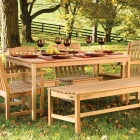
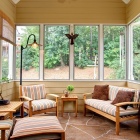
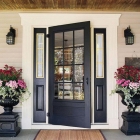
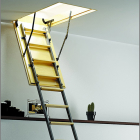


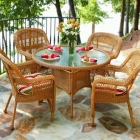
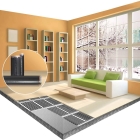
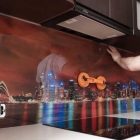

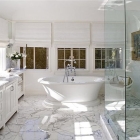
 Start a discussion ...
Start a discussion ...